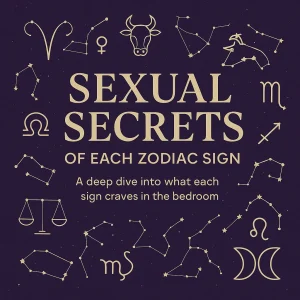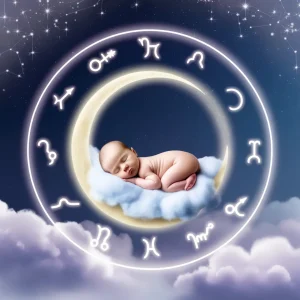I. Introduction
If you are new to astrology, you may be wondering what the houses represent in a birth map (birth chart). In astrology, the houses represent different areas of life and can give sapience into the themes and energies that will be present in those areas for an individual.
The purpose of this blog post is to give a general overview of the houses in astrology and how they can be interpreted in a birth map. We’ll bandy the meaning and symbolism of each of the 12 houses, as well as the role of the ruling planets in each house. By the end of this blog post, we hope to give you a basic understanding of the houses in astrology and how they can be used to gain sapience into your own life and personality.
Table of Contents
II. The Meaning of the Houses
In astrology, each of the 12 houses represents a different area of life and can give sapience into the themes and energies that will be present in those areas for an individual. Below is a brief overview of the meaning and symbolism of each of the houses:
- The first house represents the self, identity, and first impressions.
- The second house represents material possessions, values, and financial security.
- The third house represents communication, siblings, and short-term travel.
- The fourth house represents the home, family, and emotional security.
- The fifth house represents creativity, self-expression, and children.
- The sixth house represents work, daily routine, and health.
- The seventh house represents partnerships, relationships, and other people.
- The eighth house represents intimacy, shared resources, and transformation.
- The ninth house represents higher education, philosophy, and long-term travel.
- The tenth house represents career, public reputation, and social status.
- The eleventh house represents friendships, groups, and hopes and wishes.
- The twelfth house represents the unconscious, spirituality, and self-undoing.
Each of these houses represents a different area of life and can give sapience into the themes and energies that will be present in those areas for an individual. Understanding the meaning of the houses can be a helpful starting point in interpreting a birth map.
III. The Rulers of the Houses
In astrology, each of the 12 houses has a ruling planet. The ruling planet of a house represents the energies and qualities that are associated with that house. For illustration, the first house, which represents the self and identity, is ruled by the planet Mars. Mars represents action, desire, and assertiveness, so the ruling planet of the first house can impact the themes of self-assertion and desire for independence in that house.
Below is a list of the ruling planets for each of the houses:
- The first house is ruled by Mars.
- The second house is ruled by Venus.
- The third house is ruled by Mercury.
- The fourth house is ruled by the Moon.
- The fifth house is ruled by the Sun.
- The sixth house is ruled by Mercury.
- The seventh house is ruled by Venus.
- The eighth house is ruled by Pluto.
- The ninth house is ruled by Jupiter.
- The tenth house is ruled by Saturn.
- The eleventh house is ruled by Uranus.
- The twelfth house is ruled by Neptune.
Understanding the ruling earth of each house can give fresh sapience into the themes and energies of that house in a birth map. For illustration, if a person has Saturn, the planet of discipline and structure, as the ruling planet of their fifth house, they may be more focused on achieving their goals in a disciplined and structured manner.
IV. Interpreting the Houses in a Birth Chart (Birth Map)
Now that we have bandied the meaning of the houses and the ruling planets of each house, let’s talk about how to interpret the houses in a birth map.
To interpret the houses in a birth map, it’s helpful to look at the positions and aspects of the planets in each house. The position of a planet in a house can indicate the themes and energies that will be present in that area of life for an individual. For illustration, if a person has the planet Venus in their fourth house, which represents the home and family, they may experience themes of love, harmony, and beauty in their home life.
In addition to the positions of the planets in the houses, it’s also helpful to look at the aspects between the planets. Aspects are the angles between the planets and can indicate the relationships and dynamics between the energies of the planets. For illustration, if a person has a conjunction aspect between the Sun( representing the ego and identity) and Mars(representing action and desire) in their seventh house, which represents partnerships and relationships, they may have a strong sense of self and desire for independence in their relationships.
By looking at the positions and aspects of the planets in the houses of a birth map, we can gain sapience into the themes and energies that will be present in each area of life for an individual. Understanding these themes and energies can help us more understand ourselves and how we operate in the different areas of our lives.
V. Conclusion
In conclusion, the houses in astrology represent different areas of life and can give sapience into the themes and energies that will be present in those areas for an individual. Each house has a ruling planet, which can impact the energies and qualities associated with that house. By interpreting the positions and aspects of the planets in the houses of a birth map, we can gain sapience into the themes and energies of each area of life for an individual.
We hope that this blog post has handed a useful introduction to the houses in astrology and has given you a better understanding of how they can be interpreted in a birth chart. However, we encourage you to do some farther exploration and consult with an astrologer, If you are interested in exploring your own birth map and understanding the ennergies and themes of the houses in your map. Understanding the houses in your birth map can give precious sapience into yourself and how you operate in the different areas of your life.



